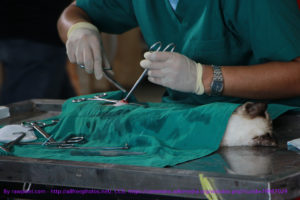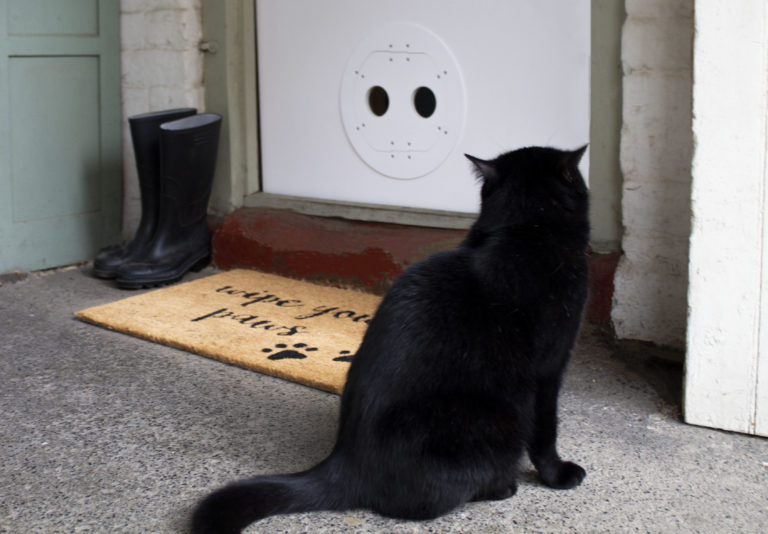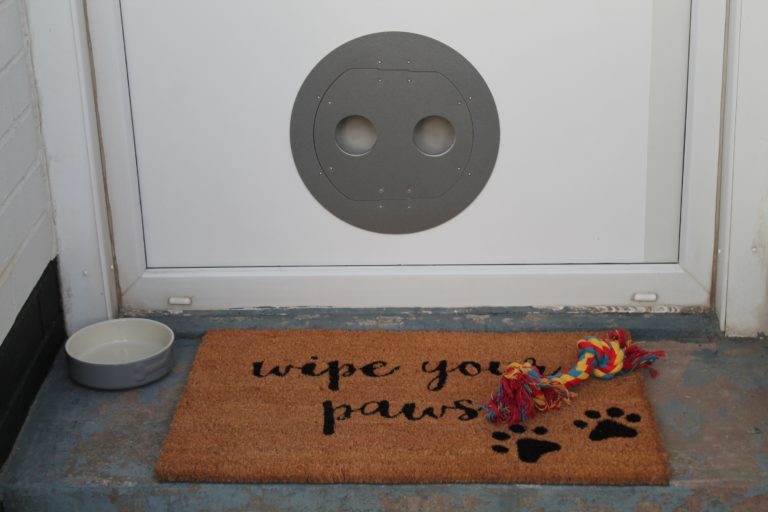Why neuter your cat?

A cat undergoing surgery
Neutering your cat is an obvious first step for any cat owner that doesn’t plan to breed from that cat. It’s a particularly relevant topic as we head into the spring and summer, prime breeding seasons for cats.
An unplanned cat pregnancy brings with it health risks, potentially unwanted kittens that are hard to home, and the financial cost of caring for your pregnant cat and her kittens.
Unwanted and unplanned kittens present a big problem for animal shelters. Across the UK and beyond shelters struggle to afford care for unwanted kittens, puppies, rabbit kits etc. Neutering your cat (dog, rabbit etc) is the responsible way to avoid adding to the problem.
Grumpy cat
Not just an internet meme, but a reality for female cats in season. As well as pregnancies, unneutered female cats will go through several seasons a year from under a year old. Short-haired cats tend to have their first season earlier than long-haired cats.
It’s just as important to ensure male cats are neutered. They will be less likely to fight and roam, prevents testicular cancer and reduces the likelihood that they’ll contract FIV. It also makes their urine less puingent, which has to be a win for everyone.
This applies to indoor cats just as much as those that go outdoors. Speying and neutering isn’t just about preventing unwanted kittens. It also benefits your cat by avoiding the stress of coming into season for females, and helps to reduce spraying in males and brings downtheir risk of prostate disease.
What does speying involve?
Both male and female cats can be neutered from 4-6 months old. Older cats can be neutered too – there’s no age limit as long as the cat is healthy. a cat can even be neutered while in season, unlike dogs.
The operation is simple and routine. Cats are shaved over the location of the op.
Male cats’ testicles are removed through a cut so small it doesn’t usually require stitches.
A female cat’s ovaries and womb are removed. The abdomen is then stitched one layer at a time.
Cats can usually return home the same day. Female cats in particular need to kept quiet and less active than usual for a few days so that their stitches aren’t put at risk. Most cats will need to wear a cone or body suit so that they don’t worry the wound.
Your cat will have a checkup after a couple of days and then a week or so after that to make sure everything is healing as it should.
A malecat can go outside and be back to normal as soon as their wound has healed. A female cat will need to be kept indoors for up to a fortnight. It’s a short-term inconvenience for a long term gain.
Do neutered cats put on weight?
Your cat will need less food after neutering, up to 25% less. You can either feed them less, or use a cat food specifically for neutered cats that contains fewer calories.
If you have any concerns at all about speying or neutering, your vet will be happy to answer your queries. There is also a great deal of information available via sites such as pdsa.org.uk and rspca.org.uk.
Microchipping
This is a great opportunity to have your cat microchipped if it hasn’t been done already. It saves your cat undergoing two procedures and probably works out slightly cheaper in vet bills.



